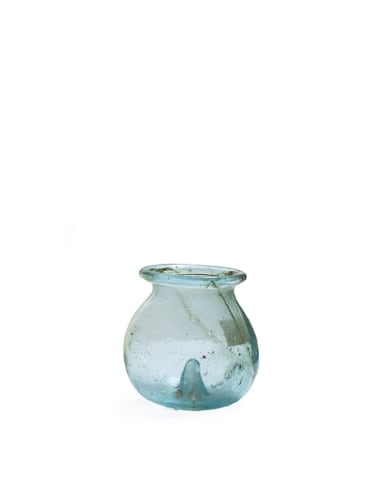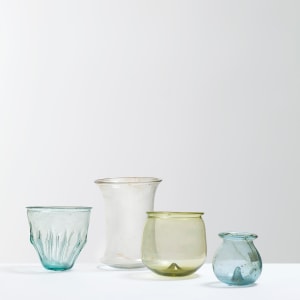Free-blown in clear, blue glass. The globular
body has a base that has been sharply pushed
up with a rod, the wide, flaring mouth is
folded. Old label with “Le Faux vers 1935” in
lead pencil. Intact, some black-brown staining
in the air pockets.
It has been suggested that this form was used as
a suction cup; a form of holistic treatment used
in the ancient world, as it still is today.
Provenance
Louis-Gabriel Bellon (1819-1899), St. Nicholas-les-Arras, France; collection no.54Bellon was one of the greatest French collectors of the 19th century. Making his fortune in the textile industry, he began to buy and collect archaeological pieces from the Mediterranean world. Until the end of the 1870s, he accompanied Auguste Ternick in archaeological excavations in the Arras region. It was there that he discovered the Gallo-Roman glassworks which subsequently constituted the most important part of his collection. His collection gained notoriety during the retrospective exhibition of French Art which took place at the Trocadéro in 1896, alongside those of Auguste Dutuit and the Protat printers. Today, part of the collection is kept at the Museum of National Antiquities of Saint-Germain-en-Laye, the Petit Palais in Paris, the Louvre Museum, and the Berck-sur-Mer museum.
Literature
For the form compare David Whitehouse, Roman Glass in the Corning Museum of Glass, Vol.I (New York, 1997), nos.288, 289 and no.291 for the rod-pushed base
Also see Véronique Arveiller-Dulong and Marie-Dominique Nenna, Les Verres Antiques du Musée du Louvre II (Paris, 2005), nos.1164 and 1166, p.420



